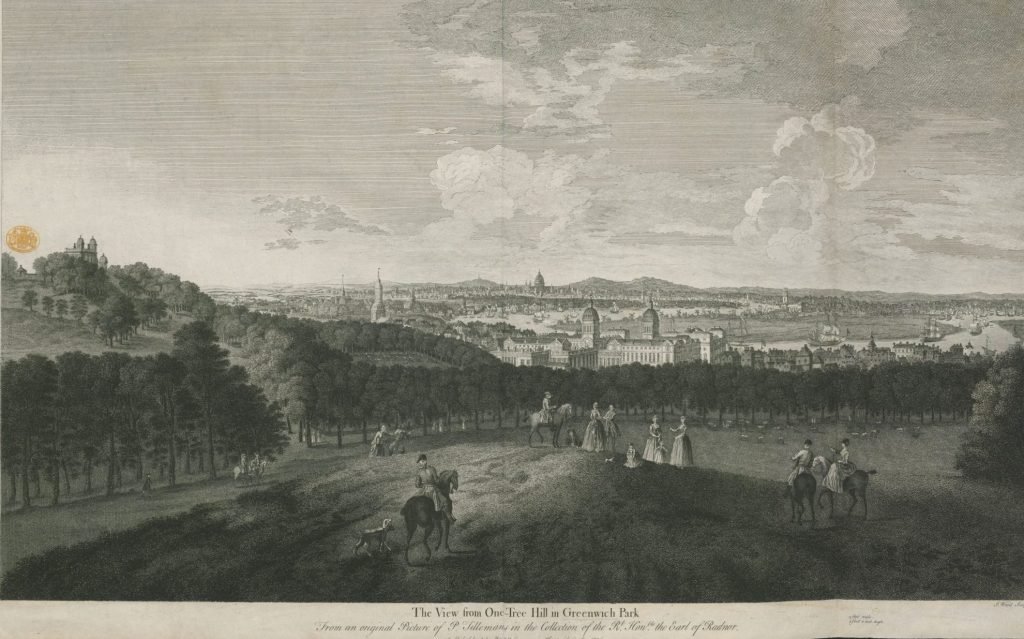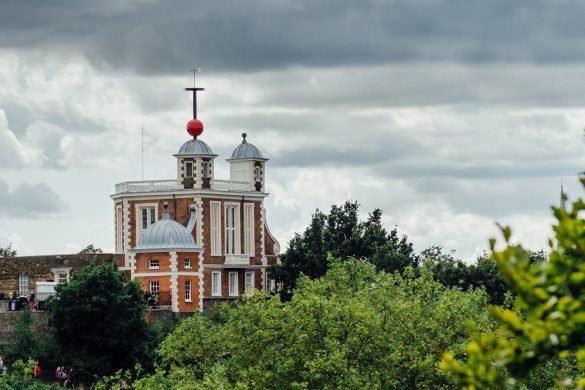Ever wondered why its called Greenwich Mean Time (GMT)? It originates from The Royal Observatory in Greenwich, one of the most historical places in London. Here you can take a photo with the prime meridian line marking zero degrees longitude and you’ll be able to see the Great Equatorial Telescope, famous for many important astronomical discoveries.

The birth-place of modern astronomy

From its humble beginnings in the 17th century, Greenwich and The Royal Observatory grew to become the epicentre of world astronomy and the birthplace of GMT and the Prime Meridian. From the top of the hill in Greenwich, the first scientists of Britain directed their telescopes to the stars, finding more and more accurate ways to help British ships navigate the seas.


Royal Observatory Milestones
- 1675 – The Observatory is founded
- 1676 – The first Astronomer Royal John Flamsteed moves in
- 1750 – 1762 Royal Astronomer James Bradley charting sixty thousand stars
- 1833 – The red time ball was created to help mariners on their ships on the Thames adjust their clocks
- 1884 – International consensus to use the Greenwich Meridian for zero degrees longitude
- 1893 – The Great Equatorial Telescope was installed
- 1935 – Greenwich Mean Time renamed Universal Time
- 1947 – Due to light pollution from London, the observatory is moved to Herstmonceux Castle in East Essex

The legacy of The Royal Observatory
Today Greenwich is no longer a centre for modern astronomy, but its legacy lives on defining the global time zones as the prime meridian of the world. Walking through the buildings and grounds, you’ll get a sense for how it was to be a royal astronomer, their carefully crafted instruments and how their first discoveries paved the way for modern science.
Highlights for families at the Royal Observatory
- Take a photo on the prime meridian line with a foot in both east and west
- Enjoy one of the scheduled shows at the Peter Harrison Planetarium*
- Go inside the dome and experience the Great Equatorial Telescope
- Touch a 4.5-billion-year-old asteroid
- Enjoy the wonderful views of Greenwich Park and Isle of Dogs
- The red time ball dropping at 1 PM every day
- The laser projected from the observatory marking the meridian line
* Tickets need to be booked separately

Trying out an old school telescope 
Discovering the history of astronomy 
Standing on the meridian line
Visiting the Royal Observatory with kids
The building itself is quite small with tight spaces, so not the ideal place for toddlers to run around. Kids from five years old will enjoy it though, and I would highly recommend a visit the Peter Harrison Planetarium to enjoy one of the shows and hands-on fun at the Astronomy Centre.

Exploring more things in Greenwich
Greenwich is a brilliant place for a day-trip since you have so many things to explore within a compact area. We have rated Greenwich Park Playground as one of the best in London after it was refurbished, and we love the interactive areas of Cutty Sark and the National Maritime Museum. Greenwich Park itself is a Royal Park where you can enjoy a picnic while having stunning views towards the City of London and Canary Wharf.

Key Information Royal Observatory
- Paid entry
- Indoor
- Type: Museum
- Borough: Greenwich
- Area: South East London
- Tube: Cutty Sark (DLR)
- Nearby: National Maritime Museum
- Official Website
Is the Royal Observatory free of charge?
No, there’s a charge. Check the official website for the latest prices.
Is the museum good for toddlers?
You’ll be fine bringing a toddler, but be aware of the limited space and narrow staircases. With young children, we prefer other museums in Greenwich like Cutty Sark and the National Maritime Museum where kids have more space and can enjoy interactive galleries.
Is the Royal Observatory still in active use?
No, it’s mainly a museum.
What is the Royal Observatory in Greenwich famous for?
It’s probably most famous for the prime meridian that passes through one of the Royal Observatory buildings in Greenwich. This geographical line has also has given the name to the time zone Greenwich Mean Time (GMT).
What’s the best way to get to the Observatory?
Travelling from Central London in style, take the Thames Clippers to Greenwich Pier, walk through the village and climb the slope towards the Observatory Hill in Greenwich Park. Alternatively, take the less glamorous route via Cutty Sark DLR station.
How much time do you need visiting the museum?
It depends on how interested you are in astronomy and how much time you spend reading all the displays. With impatient kids, we took around one hour, but could easily spend 2 hours if taking the time to go through the galleries in more detail.
What’s most interesting for teenagers?
They’ll most likely enjoy the vintage telescopes as well as standing on the famous meridian line. You should also consider getting tickets for the amazing Peter Harrison Planetarium.
What’s the red ball on top of the Royal Observatory for?
It’s a time ball dropping at 13.00 every day. The ball was installed in 1833 enabling navigators aboard ships on the Thames to verify the setting of their clocks.
Is there a telescope at the Royal Observatory in Greenwich?
Yes, the Victorian age Great Equatorial Telescope is still in place and can be seen by visitors.
Can visitors try the Royal Observatory telescope?
Not during regular visiting hours. However, the museum organises special evnts called “An Evening with the Stars” allowing visitors to gaze at the stars through the famous telescope.
Where is the Royal Observatory located?
The Royal Observatory is located in Greenwich Park in South East London on a hilltop with a beautiful view of the Queen’s House, the Royal Naval College, the river Thames and the Isle of Dogs.




